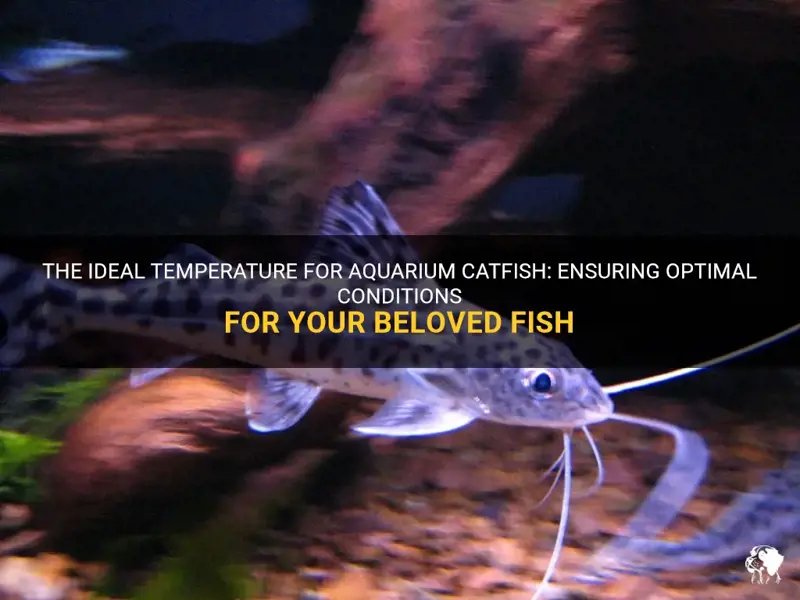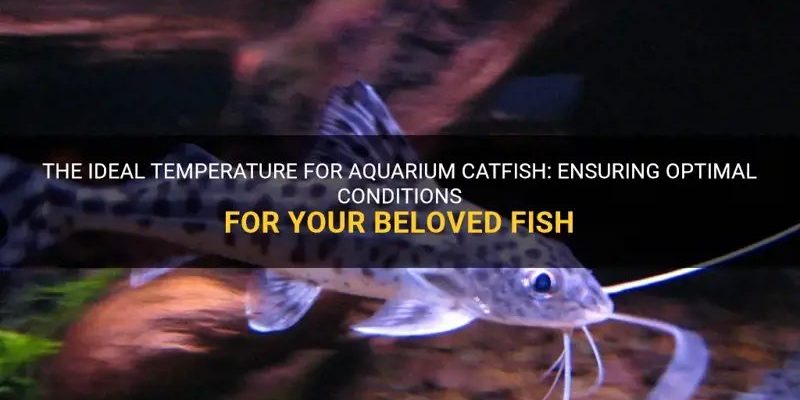
Imagine your pond as a mini-ecosystem. Just like in nature, everything is connected. If one factor is off, it could throw the whole balance out of whack. It’s not just about having water and some fish; it’s about creating a welcoming space for them. So, let’s dive into what makes the ideal pond for catfish and how you can set up your space for success.
Understanding the Right Temperature for Catfish
Temperature is one of the most crucial factors affecting catfish in your pond. Just as you’d feel sluggish in a cold room or uncomfortable in a hot one, catfish experience stress when water temperatures aren’t optimal. Catfish generally thrive in temperatures between 75°F and 85°F (24°C to 29°C). Within this range, they are more active, feed better, and grow faster.
If the water is too cold—below 60°F (15°C)—catfish tend to slow down and may even become lethargic. This could lead to less feeding and growth. On the flip side, if the water gets too warm—above 90°F (32°C)—you could start seeing some serious health issues. Fish can experience stress, leading to weakened immune systems and increased susceptibility to diseases.
You might be wondering, how do you keep the temperature just right? A good way is to monitor your pond’s temperature regularly using a reliable thermometer. If you’re in a region with extreme temperature fluctuations, consider installing a pond heater or aerator. These tools can help maintain a stable, comfortable temperature for your catfish.
Pond Depth: Why It Matters
Let’s talk about depth—another critical component of your catfish pond. Think about it: Would you want to swim in a kiddie pool if you could dive into a deep, refreshing lake? Catfish prefer ponds with sufficient depth to feel secure and thrive. Typically, a depth of at least 4 to 6 feet is ideal.
Deeper waters help in maintaining stable temperatures, especially during the hotter months. The top layer can become warm and uncomfortable, but deeper waters remain cooler and provide a refuge. Additionally, deeper ponds can help prevent algae blooms by allowing more sunlight to penetrate at deeper levels without overwhelming the ecosystem with excessive warmth.
If you’re just starting out, digging your pond to the right depth can be a fun project! Just imagine all the satisfaction you’ll get when you see your healthy catfish swimming around in there. If you’re limited on space and can’t dig deeper, adding submerged structures like fish habitats or plants can still give your fish places to hide and help maintain the water temperature.
Filtration: Keeping the Water Clean
Now, let’s discuss filtration. Having clean water is just as important as the right temperature and depth. Think of filtration as the lungs of the pond—helping to keep everything fresh and breathable for your catfish. When you have a good filtration system, it helps remove debris, excess nutrients, and harmful substances that can build up over time.
A well-functioning filtration system should have both mechanical and biological components. Mechanical filtration removes physical particles from the water, while biological filtration supports beneficial bacteria to break down waste. This combination helps keep the water clear and minimizes harmful algal growth that can choke your pond.
When choosing a filtration system, consider the size of your pond and the number of catfish you plan to keep. There are various styles available, including submersible, gravity-fed, or solar-powered filters. Each has its pros and cons, so take your time to find one that fits your needs and budget. Having a reliable filtration system can save you a lot of headaches in the long run.
Oxygen Levels: The Breath of Life
Oxygen levels in your pond are essential for catfish health. Just like we need fresh air, fish need oxygen-rich water to thrive. Catfish, especially, can require a good amount of oxygen—particularly when they’re active during warmer months.
Ideally, you want dissolved oxygen levels above 5 mg/L (milligrams per liter). If the oxygen levels drop below this mark, you might notice your catfish swimming near the surface, gasping for air. This behavior can be alarming, but it’s a clear signal that something needs to change.
Adding aeration systems, like air stones or diffusers, can help increase oxygen levels effectively. You might also want to consider adding aquatic plants that release oxygen into the water during photosynthesis. Not only does this add beauty to your pond, but it can also enhance overall water quality. Just a little extra effort can go a long way in making sure your fish are happy and healthy.
Water Quality: Testing the Essentials
Keeping an eye on water quality is vital to ensuring a thriving pond environment for your catfish. This involves checking several key factors: pH levels, ammonia, nitrites, and nitrates. Ideally, you want your pH levels to be between *6.5 and 8.5*.
If the pH gets too high or too low, it can cause stress to your fish. Ammonia and nitrites should ideally be at 0 mg/L, while nitrates should be kept below 40 mg/L. High levels of these substances can lead to toxic conditions, resulting in poor health or even death for your catfish.
You might be wondering how to keep all these levels in check. Regular water testing with kits available at pet or garden stores can help you keep tabs on your pond’s health. If you find levels are off, there are various ways to correct them, like using water conditioners or introducing more beneficial bacteria. A little vigilance goes a long way in maintaining a stable and safe environment for your fish.
Choosing the Right Catfish Species
Did you know that not all catfish are created equal? Depending on your pond conditions, some species may thrive better than others. The most common variety for ponds is the Channel Catfish, known for its adaptability and faster growth. On the other hand, Flathead Catfish can grow larger and may need deeper waters.
When choosing the right species for your pond, consider not just the water conditions but also your goals. Are you looking to catch fish for food or just for fun? Some species are tastier, while others are better for catch-and-release fishing. Knowing what you want out of your catfish experience can help guide your choice.
It’s also worth noting that some species may require special care or specific pond setups. If you’re unsure, do a bit of research or consult local experts to ensure you select the right catfish for your specific conditions.
Final Thoughts on Pond Setup for Catfish
Setting up a pond for catfish is not just about filling it with water and fish. It’s a balancing act that requires attention to temperature, depth, filtration, and more. Each aspect plays a vital role in creating an ideal environment where your catfish can flourish.
By keeping in mind the right temperature ranges, ensuring proper depths, maintaining clean water, and selecting suitable species, you’re setting up a thriving ecosystem. Plus, the joy of watching your catfish swim around happily is rewarding. So, take your time, do your research, and remember that a little effort goes a long way in creating a perfect pond for your aquatic friends. Happy fishing!

